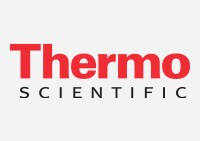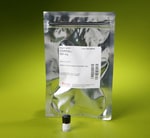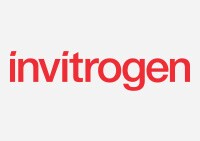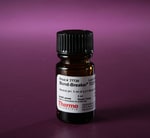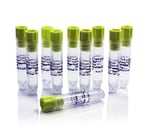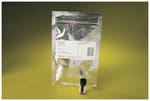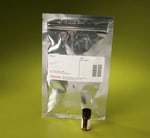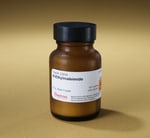Search Thermo Fisher Scientific

Protein Modification Reagents
Protein modification reagents are used to modify the amino acid side chains of proteins to alter their native charges, block or expose reactive binding sites, inactivate functional groups, and change functional groups to create targets for crosslinking and labeling.
Products (75)
Learn More (313)
Documents & Support
(500)75 Products
Filter
Dithiothreitol (DTT) Invitrogen™
Disufide crosslinks of cystines in proteins can be reduced to cysteine residues by dithiothreitol (DTT).
Pierce™ Iodoacetamide, No-Weigh™ Format Thermo Scientific™
Thermo Scientific Pierce Iodoacetamide or Chloroacetamide are provided in a no-weigh format, where small amounts of reagent are pre-weighed and packaged for single use. This single-use format prevents the contamination and loss of reagent reactivity over time associated with repetitive opening and...
Pierce™ SAT(PEG)4 (PEGylated N-succinimidyl S-acetylthioacetate) Thermo Scientific™
Thermo Scientific™ Pierce SAT(PEG)4 is a long-arm (18.2 Ås), pegylated form of SATA, a sulfhydryl-addition reagent for covalent modification of primary amines to facilitate controlled, heterobifunctional crosslinking.
CT(PEG)12 Carboxy-PEG-Thiol Compound Thermo Scientific™
Thermo Scientific™ Pierce CT(PEG)12, or carboxy-PEG12-thiol, is a carboxyl- and sulfhydryl-terminated compound that contains a 12-unit polyethylene glycol (PEG) spacer and is used to modify surfaces such as quantum dots, monolayers and magnetic particles.
DTNB or Elman's reagent can be used to quantitate thiols in proteins, cells and plasma by absorption measurements. It readily forms a mixed disulfide with thiols, liberating the chromophore 5-merapto-2-nitrobenzoic acid (absorption maximum 410 nm).
Bond-Breaker™ TCEP Solution, Neutral pH Thermo Scientific™
Thermo Scientific™ Bond-Breaker TCEP Solution, Neutral pH is a stable, 0.5M solution of the thiol-free, phosphine-based TCEP compound, useful as a 10X stock for addition to SDS-PAGE sample loading buffers to reduce protein disulfide bonds.
Pierce™ Traut's Reagent (2-iminothiolane) Thermo Scientific™
Thermo Scientific™ Pierce Traut's Reagent is 2-iminothiolane, a small thiolation compound that reacts with primary amines (e.g., lysine side chains) to add a small spacer arm (8.1 Ås) terminated by a free sulfhydryl group.
Pierce™ TCEP-HCl, No-Weigh™ Format Thermo Scientific™
Thermo Scientific™ Pierce TCEP-HCl is pure, crystalline Tris(2-carboxyethyl)phosphine hydrochloride, a thiol-free compound that is highly effective at reducing protein and peptide disulfide bonds, as well as being odorless and stable.
MS(PEG)12 Methyl-PEG-NHS-Ester Reagent Thermo Scientific™
Thermo Scientific™ Pierce MS(PEG)n reagents are methyl-terminated, polyethylene glycol compounds (n equals 4 to 24 PEG units) activated as NHS esters for covalent pegylation of primary amines on proteins (e.g., lysines) or assay surfaces.
Disufide crosslinks of cystines in proteins can be reduced to cysteine residues by TCEP (tris-(2-carboxyethyl)phosphine). Unlike DTT (dithiothreitol), TCEP does not contain thiols and therefore usually does not need to be removed prior to thiol modification.
MM(PEG)12 Methyl-PEG-Maleimide Reagent Thermo Scientific™
Thermo Scientific™ Pierce MM(PEG)12 is a methyl-terminated, polyethylene glycol compound (3 times 12 PEG units) activated with a maleimide group for covalent pegylation of sulfhydryls on proteins (e.g., cysteines) or assay surfaces.
TMS(PEG)12 Branched Methyl-PEG-NHS-Ester Reagent Thermo Scientific™
Thermo Scientific™ Pierce TMS(PEG)12 is a three-branched, polyethylene glycol compound (3 times 12 PEG units) activated as an NHS ester for covalent pegylation of primary amines (e.g., lysines) on proteins or assay surfaces.
Pierce™ NEM (N-ethylmaleimide) Thermo Scientific™
Thermo Scientific™ Pierce N-Ethylmaleimide (NEM) is a small compound that forms stable, covalent thioether bonds with sulfhydryls (e.g., reduced cysteines), enabling them to be permanently blocked to prevent disulfide bond formation.
CA(PEG)12 Carboxy-PEG-Amine Compound Thermo Scientific™
Thermo Scientific™ Pierce CA(PEG)n Compounds are pegylated amino acids of the form carboxy-PEG-amine, where n equals 4 to 24 polyethylene glycol units, and are useful for a variety of surface- and molecule-pegylation applications.
MA(PEG)12 Methyl-PEG-Amine Compound Thermo Scientific™
Thermo Scientific™ Pierce MA(PEG)n Compounds are methyl- and amine-terminated polyethylene glycol reagents, where n equals 4 to 24 PEG units, that are useful for a variety of surface-modification and molecule-pegylation applications.
Learn More (313)
View all
Protein modification reagents are chemical agents used to modify amino acid side chains to alter the native charges, block or expose reactive binding sites, inactivate functional groups, or change functional groups to create targets for crosslinking and labeling.
We offer a wide range of reagents to modify proteins by crosslinking, fragmenting, cleaving, denaturing, reducing disulfides, or attaching functional groups to study protein function and interactions. Use our helpful Bioconjugation Technical Handbook to help improve your protein modification...
Documents & Support (500)
View all
What is a protein modification reagent?
Why is protein structure important for crosslinking?

